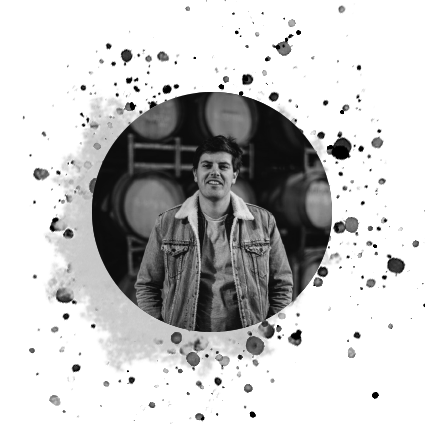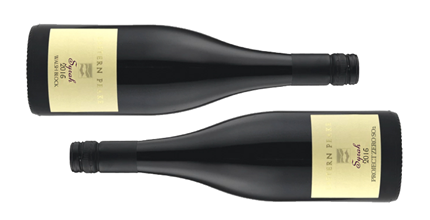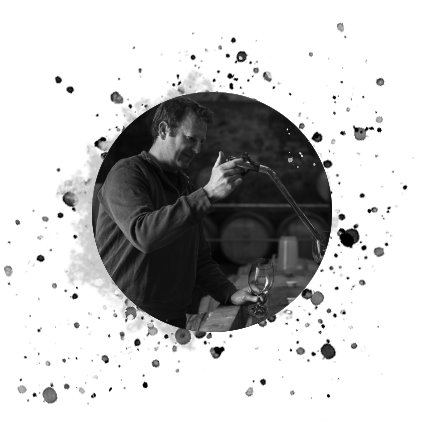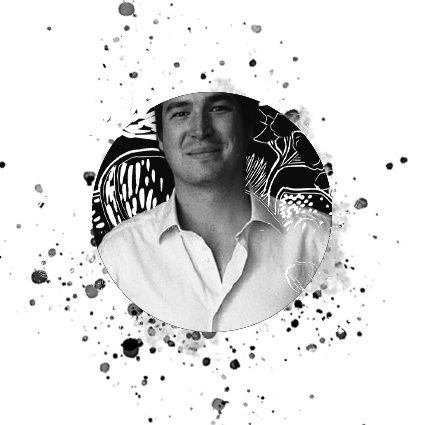Any fashion-conscious person knows that apparel speaks louder than attitude, but not all of us care. In fact, and despite a world filled with advertisements covering the latest trends and the pressures associated with the same, some of us just like to wear whatever we want. Our world is fast becoming a slave to trends and idolising celebrities, which sets my teeth on edge. I’m sure I am not alone in having an irrational dislike of celebrities. I admit that I have no solid foundation for my dislike as I am sure they’re a super bunch although, I am certain the world would be a better, and more balanced environment in which to live,without them!
Wine, sadly is suffering from the same fashionable problem and in particular Australian Shiraz. Thankfully, wine producers and Aussie critics are respected rather than idolised although I see no harm in a few James Halliday posters being pinned to our walls. More seriously, and particularly through social media channels, Shiraz is taking a fashion bashing which is unjust. It is widely acknowledged that social media has had a huge impact on our society – some for the better but equally, it can be a rather unpleasant curse.
I completely understand the need for progress, and I would strongly advocate the necessity for our industry to adapt to climate changes, packaging, and all manner of frailties which continue to be ignored. Ultimately, the wine producers must make the change. The Margaret River producer, Pierro (stunning Chardonnay and always one of my favourites) now bottles their wine in lightweight glass, which has cut their carbon footprint by 44% which is a fabulous achievement.
Pierro should be congratulated whereas, and to get to the thrust of my communication, those who preach grape fashion and more importantly belittle with their inept and uneducated tweets, posts and or statements should receive a suitable punishment.
Perhaps winter vine pruning without the use of clippers – a fitting punishment for their crime I would say. That said, and to offer balance, wine commentary on some social media platforms can be fascinating and highly educational.
I acknowledge that the wine industry is tough, and many UK independent wine merchants struggle to make ends meet - this is sad as we must provide for our families. Though, I have less sympathy for those who bash-on with their fashionable nonsense when it’s quite often for the sheer sake of being seen to be trendy and cool (I am now showing my age with the use of these Dad words!). The same can be said for some of the UK’s wine press.
What is the problem with Aussie Shiraz? Is it synonymous with big, bold styles only? Perhaps the natural wine movement has taken the limelight? Even a desire for freshness, as opposed to the once-widespread heaviness of oaky, alcoholic bottles. Or, is it that wines pressed with the thighs of vineyard angels, fermented with wild yeasts found in the remote corners of the Galápagos Islands, racked into ancient Chinese pottery and then transported to the bottom of the Mariana Trench by special wine mermaids is the only wine worthy of mention?
Is The Vinorium deemed to be old-school and not worthy of mention as we advocate, and openly so, the greatness of Aussie Shiraz? We are the voice of some four-thousand, global customers who love Aussie wine, and mainly Shiraz. Statistically, we have sold some 188,704 bottles of high-value Australian Shiraz since January 2017, which is strong evidence that, and despite opposition, Shiraz is here to stay.
Who better else to offer perspective than a collection of our winemakers? Which is also a great way to introduce some of our newest friends… We sent each producer a tough list of questions and here are their views.
“we work with fruit that is right at the outer margin of ripeness but on the right side of ripeness”
 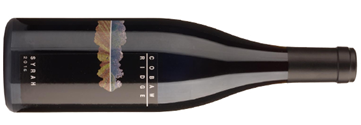
“When we first started to think in detail about what we might plant here back in 1984, Shiraz was the first thing we knew that we would definitely plant. Back then Shiraz was very, very much out of vogue ...Cabernet was King. In those times people growing old super-low yielding dry grown (SA) Shiraz could just about not give the fruit away. Some bright spark came up with the idea of Shiraz muffins!!!
There was even a government funded vine pull to encourage people to remove those 100 year old plantings! Whenever we mentioned to industry people about planting Shiraz we were laughed at. How times have changed ... We have really seen two styles come and go over the years. First it was all the bottled sunshine style then the "Parker Style" era and slowly it has evolved to more balanced, juicier, moderate alcohol styles. The evolution of our growing and making really has been a slow transition. We don't feel under any pressure as it really is logical for here that organic / biodynamic is the way forward. We start with super clean fruit that is not full of agro chemicals, moderate potential alcohol as a result of our cool high-altitude site, lots of minerality from our old granite soils and amazing abundant acidity and tannins ...why add anything to that?! We have not set out to "make a style," just what the vintage and vineyard gives us year on year. Stylistically we see spice, mineral, earth, graphite and sometimes a big hit of pepper and dark fruits in the wines. Year on year they change but the framework remains true to site and times.
Being totally the masters of what we use as our base ingredient is to us a huge advantage ....no one can duplicate the resultant wines! We drink as far and wide as we can, we’re not really into super-charged, high alcohol, stewed low-acidity wines, so mostly cool climate examples. Not really too many fashion trends that I feel are valid for here.... Not a fan of the extreme "natural" wines (read ... not organic but have no adds, cloudy, funky, cider, high volatile acidity, bretty, but hey it’s "natural") all a little bit of the kings new clothing. Nor the latest thing of 100% whole bunch ferment. Here we work with fruit that is right at the outer margin of ripeness but on the right side of ripeness ...all we would end up with was green tannins ...no! I like to say to people we make "lower case" natural wines... at the end of the day this is what we do for a living, so the wines have to be able to stack up commercially. I think most people will probably be coming from a similar angle for future trends ... Freshness and drinkable styles.
The big advantage for here is that we can achieve that with ease without resorting to earlier and earlier picking dates and lots of added acid . True cool climate”.

“I’ve unfortunately had too many rubbish experiences with very faulty wine dressed up under the natural banner to take this commercial segment seriously”
 
“I remember the native Barossa shiraz wines from the 80s (tasting as a teenager in the 90s). American oak was pretty dominant, though many winemakers like my father and uncle used larger format barrels (500L) so the wines were integrated. I guess this moderate style changed in the early 2000s with slightly riper harvesting and greater use of smaller format French oak (2-300L). This method created bigger wines, yet the better ones were still very refined. More than a few Aussie makers went further, picking super late and essentially rehydrating the ferments. Ungainly fruit and jam bombs adored by the uncouth.
These days there’s a huge diversity of shiraz styles from all over the country - from the über cool Tassie to vibrant Canberra to fruit cakes in McLaren Vale. There is definitely an impetus to minimise inputs in grape growing and winemaking. I believe though to be able to make pared back wines you first must understand how to make conventional wine - kind of how Picasso first practised realism before moving to cubism and surrealism.
I’ve unfortunately had too many rubbish experiences with very faulty wine dressed up under the natural banner to take this commercial segment seriously. Yet one of the best red wines I’ve tasted was biodynamic and natural - 2009 Domaine de la Romanée-Conti Romanée-Conti. It was nearly on par with Tassie pinot. Our new vineyard will be managed organically and possibly use some non-spiritual elements of biodynamics.
I’m a huge fan of shiraz out of the Rhône. It’s also always a treat to pull out a bottle from the Barossa side of the family. In a fashion sense I’m pretty rigid. I don’t like green tannin or harsh acidity - traits often achieved by makers trying to elicit elegance and cool-climate characters by harvesting prematurely. The alkaline nature of concrete eggs are good at neutralising acid though… Technique-wise I’ll probably begin to experiment again with shiraz-pinot gris co-ferments. I practiced this in the early days of Glaetzer-Dixon, similar to the classic shiraz-viognier wines. I find pinot gris integrates more completely, lifting aromatics and creating a plushness to the palate. I think the great melange of Aussie shiraz is our strength. There’s something delicious for everyone and every occasion”.
We’ve unearthed some wonderful winemaking in Owen Latta of Eastern Peake. The team and I have been spoilt rotten with his samples
(a Pinot Noir vertical from 2000 to 2015
was incredible).
The evolution of Australian Shiraz through Owen’s eyes
“Australian wine is on the right trajectory; it will take some time to get there, yet it seems like it’ll come much quicker than expected. Here’s what I’d like to see…”
“What’s old is new again, Australian Shiraz table wine has evolved dramatically over the years. The early years, by default, were generally about the place where it was grown resulting in wines which showed the vineyard in the wine. As seasons changed & drinking styles evolved, blending shiraz (with cabernet sauvignon) became popular. During the late 80s Shiraz was no longer allowed to be called Hermitage, Syrah seemed too hard to pronounce & shiraz was branded as the varietal namesake. The late 1990s through to the late 2000s it became all about the winemaker stamping their DNA on the wine with the use of oak & ripe fruit resulting in higher alcohols to gain high scores with wine critics & the Australian wine show system. Mid-late 2000s it became all about fermenting with whole bunches, currently it seems like it’s all about going back to the roots - lower alcohols & a return to a sense of place to let the wine speak of where it’s from. This is really exciting to see, it’s really great to see how the variety morphs into many styles over the wine growing regions of Australia and how we can see this through terroir not from winemaking additions”.
Do you feel that there is pressure from the press and consumers on producing natural / biodynamic / low sulphur / low alcohol wines?
“Wine Producers definitely have more pressure on them to change their farming & winery practices than ever before. In Australia 15 years ago organic/biodynamic practice really began to take shape as a movement after many, many years from successful producers telling everyone how good the benefits were from producing wines from chemical free grapes. Well over a decade on, the industry across the world has never been so exciting with so many producers asking themselves a serious question, “should we be using chemicals to produce wine, should we be harvesting so late to achieve high sugars?”
Again.. what’s old is new again, chemicals weren’t as readily available pre 1980 as they are now, producers have become so reliant on these products that they have totally forgotten how to farm and produce wines by reading the season to apply practices that have existed in the generations before. Looking at the industry the biggest move and number one preference for most people is to move away from herbicide using the vine for weed control. Glyphosate & other Herbicide products kill soil heath & traces of it end up in the finished product which can’t be good for human health. Even though wine is alcohol, we don’t know what glyphosate’s impact on the human body is yet, so far, from initial studies, it looks pretty bleak.
Current trends in the industry are to have lighter more refreshing styles of wine, it seems like the heavier, high alcohol, fuller flavoured, oak driven styles are taking a back step and sulphur levels are being toned back too. This is such a wonderful step forward for wine, more styles make it more interesting which flows on to the consumer for more excitement. Personally, I don’t really pay too much attention to these pressures, we’ve always been focused on the vineyard side of things, and that’s where it matters the most. Farming with organic/bio practices is definitely the best possible way to look after the land & the vines. In our cellar, nothing at all is added to the wines, only a small amount of sulphur after Malo-lactic fermentation & before bottling. We’ve been using this same practice for almost 20 years. In general, it’s really great to see a movement towards low impact, respectful farming and winemaking to produce more interesting, refreshing, fine or fun wines.
For me, great wines come from great vineyards and fun wines come from fun people.
I like all wines so long as when they are being consumed they take me to a place where the terroir stamps its DNA on the wine or the personality of the producer is transcended into the glass to take you on a journey. It makes it much more enjoyable when the farming is spot on with org/bio principles, lower alcohol, low sulphurs & no chemicals. That being said there are still some wines of the world that are absolutely amazing that follow conventional practices, I still enjoy these wines very much indeed. For me there is a place for everything”.
Is the Zero SO2 Syrah the only Syrah you currently produce under Eastern Peake? How would you describe its style and its unique place in the vast world of Australian Shiraz? (And by the way, are you planning to introduce a similar bottling with other varieties?)
“There is normally only one Syrah produced which is called Walsh Block, grown by our neighbour Frank Walsh & Family. It’s 50 metres over the road from us on the same soil type (weathered basalt over grey loam). Established in 2003 it’s a relatively young vineyard. In 2015 & 2016 zero sulphur cuvées were released from this block to see what would happen. There has been a Zero SO2 Eastern Peake Pinot Noir produced every year since 2013, so it was about time to see how the Syrah worked. It’s from the same batch so no tricks and no fuss. The wine is just bottled without any SO2. It’s very season dependant making Zero SO2 wines, hopefully vintage 2020 comes through with the goods to release more of them once again”. Ps: We loved his zero SO2 Shiraz – Quite remarkable.
Have your personal preferences of Shiraz changed over the years? Are you swayed by any fashions?
“I like to have a pretty open mind about all varieties & all wine styles - there’s a place for everything. Fashion is the greatest, it puts the pressure on for change which brings new things and excitement to the wine industry. Being from a cold-cool continental climate where pinot noir & chardonnay is mostly grown and only very small plantings of Syrah exist, I’ve always enjoyed Syrah of a cooler climate. I do love to check in on the cool-warmer climate wines occasionally it’s really exciting to see how producers are doing different things from classic to fun wines”.
Where would you like to see Australian wine heading towards, both as a winemaker and a consumer? Is there anything that excites you looking into the future as a winemaker? Anything that you would like to experiment with - any particular styles, techniques, concrete eggs perhaps?
“Australian wine is on the right trajectory; it will take some time to get there, yet it seems like it’ll come much quicker than expected. Here’s what I’d like to see: Viticulture practice, the industry heading towards what seems like a more friendly farming philosophy. So many producers are thinking about or adopting organic principles & putting them into practice on their land, this is exciting.
Exciting wines (LoFi & Natural), I’ve been very fortunate to be a part of the natural wine movement in Australia through wine festivals called Rootstock Sydney & Soulful Wine Melbourne. These important festivals have helped introduce winemakers/vignerons wines to people on a grander scale in such a humble fashion where everyone is equal. It’s truly amazing to see how this movement has rocked the industry into a build towards change.
Experimenting with planting new vineyards, using new varieties. Over the next few years I’m aiming to plant 4 new blocks. Pinot Noir using a rare clone we have called Morillion, Chardonnay P58 clone, Chenin Blanc and a Block of 3 acres with 8-16 different varieties to make a white co-fermented blend I haven’t quite decided on which ones yet, keep a an ear out to see how this progresses.”
Magda spoke with the Kay Brothers’ team, as we were keen to understand their thoughts (given KayBrothers’ long, traditional history)
“The uniqueness of Australian Shiraz is its generosity and fruit forwardness, & we are pushing these boundaries gently.”
 
The question of producing natural / biodynamic / low sulphur / low alcohol wines was first on the agenda.
“McLaren Vale is lucky to have low disease pressure and we are growing our grapes with sustainability foremost in mind. The original Hardy’s Upper Tintara source block was extremely clean and free of disease and virus. It is a multi-clonal selection e.g. not one single clone, which provides diversity and helps the vineyard as a whole defend itself against various virus and disease threats. We are currently running an organic trial to determine what change it makes to the vineyard, and the fruit, and then will decide whether to keep pushing in this direction. Flavour ripeness is the ultimate result we are striving for, and sugar level is only one part of it. McLaren Vale is a warmer region, whilst we benefit from the cooling sea breezes of the Gulf of St Vincent, Shiraz can result in 14-14.5% alcohol”
Is Kay Brothers considering moving towards the aforementioned?
“We believe in our winemaking traditions, utilising a traditional basket press, which results in more gentle tannin structures. Ultimately that’s what Kay Brothers stands for. In terms of earlier approachability, we do exceptionally well with our Grenache wines, which obviously have finer tannins, and pair particularly well with lighter and spicier cuisine”
Let’s get down to brass tacks: We asked the team to describe the Kay Brothers’ style and their unique place in the vast world of Australian Shiraz?
“Our vineyard has a mostly eastern aspect with gentle undulations. Soils are quite shallow and vary from gravelly alluvial sandy loams, red loam and small sections of heavy clay. The underlying geology is classified as “south maslin sands” comprised of layers of glauconite, limestone, calcareous sandstone and siltstone. These are the main features that contribute to the wines’ character, which consistently produces full bodied wines with deep, concentrated colour and fruit flavour, that is multi-layered, providing complexity but with gentle balanced acidity and extremely fine tannins that provide great length and age ability”
Have your personal preferences of Shiraz changed over the years? Are you swayed by any fashions?
“We are traditional winemakers and are not seeking to follow fashions. In terms of winemaking, the evolution at Kay Brothers has been to adopt a more balanced oak regime with wines remaining a lesser time in oak, and we utilise bigger format barrels i.e. 500 litre puncheons and more seasoned oak, which ultimately results in earlier integration and more balanced wines. However, the tannin and structure is still a feature, and the potential for ageing remains strong”.
All-in-all, Kay Brothers are not swayed by fashions and clearly have no intention of changing their style. Has this affected sales? Block 6 remains one of our biggest sellers (globally) with 50% of our current allocation selling in one day!
We welcome Josh Cooper, the son of Allan & Nelly (Cobaw Ridge winery). Josh works with central Victorian fruit from outside the family winery to craft his own collection of low-intervention wine. The team and I have been blown away with his wines and cannot wait for you to experience them all (They’re arriving in two weeks).
"The Springs Syrah must be the most unique Aussie Syrah I have ever sampled. Quite brilliant."
Josh’s take on the evolution of Australian Shiraz
“For me shiraz/Syrah really reflects the evolution of the Australian wine industry as a whole. Going from a niche product in the 40s to one that now dominates the Australian market. With exceptions such as those from the Hunter Valley, most of the early shiraz wines were made from fruit once destined for fortified wine production (this still happens today in some warm climate areas). The shift in planting in more suitable areas for table wine production coincided with the rise in popularity in red wine in the domestic and international market and more thought was given to producing the best red wines possible. Those like the ’55 Wynn’s Michael Hermitage, ’55 Woodley’s Treasure Chest, and ’65 Lindemans Bin 3110 are among the greatest wines I’ve ever drunk. A testament to the quality of early shiraz wines in the country.
The 70s saw a rise in small producers planting in new areas without fear of experimentation, then the 80s and early 90s saw a boom in cool climate plantings. Many of which lay the foundation for the best example of that style today. Styles have shifted over these periods from quite green and lean in the '80s, to rich and full bodied in the early ’00s, to where we are now, in a middle ground where balance is favoured overpower”.
Best practices…?
“There is a push from all directions in the industry towards best practice in the vineyard and winery. And again, where balance is now largely favoured, lower alcohols are a natural result”.
What excite you as a winemaker and a consumer?
“I love wines that make you want to drink another glass, so balanced, more elegant and often lower alcohol styles are certainly exciting. I think the whole industry is for the most part excited by moving step by step to the most sustainable farming and production possible”.
What styles of Syrah/Shiraz do you opt for most frequently in the comfort of your own home?
“Usually those that are more medium bodied, savoury, aromatic and with good structure. Though I do drink plenty of fuller bodied examples in the cooler months. I’m particularly ford of Noel Verset, Allemand, Gonon and Herve Souhaut, and in Australia, Standish, Sami-Odi, Tyrrell’s and Wendouree”.
The Springs Syrah must surely showcase a style which you always wanted to make. How would you describe its style and its unique place in the vast world of Aussie Syrah?
“I think the dominant factor of that wine is that it’s grown on lean granite soil, which for me always seems to lead to a lighter weight, more aromatic and savoury style of wine, so I try to work with these characters in the winemaking to highlight them. It’s often the polar opposite to what people think of as a stereotypical Australian shiraz, but there are plenty of other examples in the style too”.
Have your personal preferences of Shiraz changed over the years? Are you swayed by any fashions?
“I think they’ve actually stayed quite consistent. The same things I’m buying to drink and cellar are largely the same as they were 10 years ago”.
The future?
“For me the most exciting thing is further investigation of new vineyard sites and the refinement of viticulture. Each of my wines is really just directed by the quality of fruit and the character of the site it was grown in, so the higher quality those are, the higher quality the wine”.
Next week we carry on with our Aussie Shiraz focus as we are keen to share more views from our winemakers and customers too. On a sober note, we spoke with Mark from Purple Hands this week regarding the awful bushfires. We were shocked to learn that over 1.7 million hectares have burnt with the number rising by the day. Smoke and debris from the continued fires have travelled across the Tasman Sea to New Zealand, some 2,000 kilometres. These are deeply worrying times and we send our very best wishes. Fear knocked at the door. Faith answered. No one was there – Let’s hope that everyone keeps safe
|










